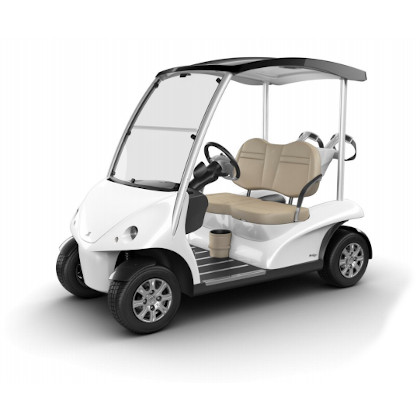GOLF BUGGY SERVICING & MAINTENANCE
In addition to selling new and used golf buggies plus a range of accessories to cusomise your golf buggy, Motorculture can provide golf buggy servicing, golf buggy maintenance, golf buggy repairs or spare parts for your golf buggies, hospitality carts and turf utility vehicles.






Call us at Motorculture on 02392 599 998 or email sales@motorculture.co.uk to book a golf buggy service, for golf buggy spares, golf buggy maintenance or for new and used golf buggy sales.
MOTORCULTURE GOLF BUGGY SERVICE
The following work would be carried out to service your golf buggy ready for the new season.
To book a golf buggy service, order golf buggy spare parts or advice regarding golf buggy maintenance, please call us on 02392 599 998.
GOLF BUGGY BATTERY OPERATION & CARE
Charging: Correct charging methods extend battery life and range between charges. Charge new batteries completely before they are used the first time. Charging time will probably be at least 12 hours. New batteries need up to four hours more charging time than "mature" batteries. Schedule enough charging time, if possible, so the charger shuts off automatically. Age of battery, condition of battery, state-of-discharge, temperature of electrolyte, AC line voltage level, and other variables affect charging time. Limit the use of new batteries between charging for the first 5-20 cycles. New batteries have less capacity than batteries which have been broken in. New golf car batteries should be limited to 18 holes between charges. Industrial vehicle batteries should not be discharged more than 20-30% before recharging.
Whenever possible, for longest battery life, recharge batteries as soon as they become 20% discharged (1.233 SG/37.38 volts). Never allow batteries to fall below 80% discharged (1.148 SG/35.94 volts). Deep discharging significantly reduces battery life. Batteries in storage self-discharge and should be recharged whenever the specific gravity falls below 1.240. The rate of self-discharge varies directly with temperature.
Battery state-of-charge can be determined by using a hydrometer, or by connecting the charger and observing the charging rate. If the ammeter needle jumps smartly to 20-25 amps and then tapers below 14 amps within 15 minutes, the battery is fully charged.
Watering: Correct watering techniques extend battery life. Check the electrolyte level on new batteries before putting them into service, and at least monthly on batteries in service. Water use increases as batteries age.
Never allow the electrolyte level to fall below the top of the plates. If the plates are exposed, add only enough water to cover the plates before charging.
Do not overfill batteries. Electrolyte expands and can overflow during charging. Water added to replace the spillage dilutes the electrolyte and reduces its specific gravity. Cells with lower specific gravity have lower charging capacity. Make sure the electrolyte covers the plates before charging and fill cells to the markers only after batteries are charged.
Use only distilled water. Electric vehicle batteries may use up to 16 quarts of water during their useful lives and non-distilled water may contain harmful minerals which will have a cumulative adverse effect on battery performance.
Cleaning: Acid-soaked dirt on the battery tops causes current leakage and reduced battery efficiency. Hose wash battery tops periodically with clean low-pressure water to keep them free of acid spillage, dirt, grass cuttings and other debris. Make sure vent caps are secure before washing. Do NOT hose wash electronic controllers, switches, solenoid and other electrical control devices. Cover them if necessary.
Wash the tops with a baking soda mixture (1/2 cup per quart of water) and a stiff bristle brush if a low-pressure hose doesn't remove the dirt. Rinse with clean water.
Make sure the battery tops are clean and dry before putting them into storage.
You should always refer to your own manufacturers operator workshop manual or technical document when caring for your battery.
OIL
As you will be aware, oil has many jobs in your engine of your golf buggy. It lubricates, seals, cools and cleans all of the moving parts.
Allowing your oil level to become low is probably the most harmful thing you can do to any engine. When you don't have the recommended amount of oil the engine can overheat and critical metal parts may lock up or even melt.
For help or advice regarding oil for your golf buggy, please call us at Motorculture on 02392 599 998.
FUEL
If fuel is allowed to sit in your gas tank too long it can oxidize and go stale. Actually it doesn't take very long. In a vented tank fuel can go stale within 60 days or so.
Fuel is actually a mixture of different hydrocarbons and in as the lighter ones evaporate the heavier ones are left behind leaving gasoline that is slightly thicker than the original mixture and has an odour like varnish. The problem with stale petrol is that it can leave gummy varnish-like deposits in the jets in your carburetor. Of course you shouldn't go around smelling your petrol tank to see if it has a varnish odour.
If the carburetor has become clogged by these deposits it may need to be soaked in carburetor cleaner. First remove all the rubber pieces. After soaking the carburetor replace all the gaskets with new ones and reinstall the carburetor. Make sure the fuel tank is clean and dispose of the stale fuel properly. Don't pour it on the ground and don't leave it sitting out in the garage. If possible it is best to run the engine until the tank is empty.
If your golf buggy isn't used very frequently and a tank of fuel lasts you more than a couple of weeks, you may want to consider a fuel additive that will slow the oxidation process and extend the storage time.
WHAT VOLTAGE IS MY BUGGY?
Determining how many volts your golf buggy uses is as easy as counting the water fill caps on the batteries. Lifting up your golf buggy seat reveals the battery compartment and the water fill caps are located on each battery. Each battery cell covered by a cap is 2-volts. Simply count all of the battery fill caps on your batteries, multiply this total by two and you will have determined your golf cart's voltage. Petrol golf buggies utilize one 12-volt battery.
Please call us at Motorculture on 02392 599 998 or email sales@motorculture.co.uk to book a golf buggy service or to enquire about golf buggy spare parts and general golf buggy maintenance.
GOLF BUGGY ACCESSORIES TO BUY ONLINE
Batteries, weather protection covers, buggy enclosures and golf buggy accessories available to buy online from our eBay shop.
Motorculture can also help with any golf buggy finance options you may require, please contact us for details.